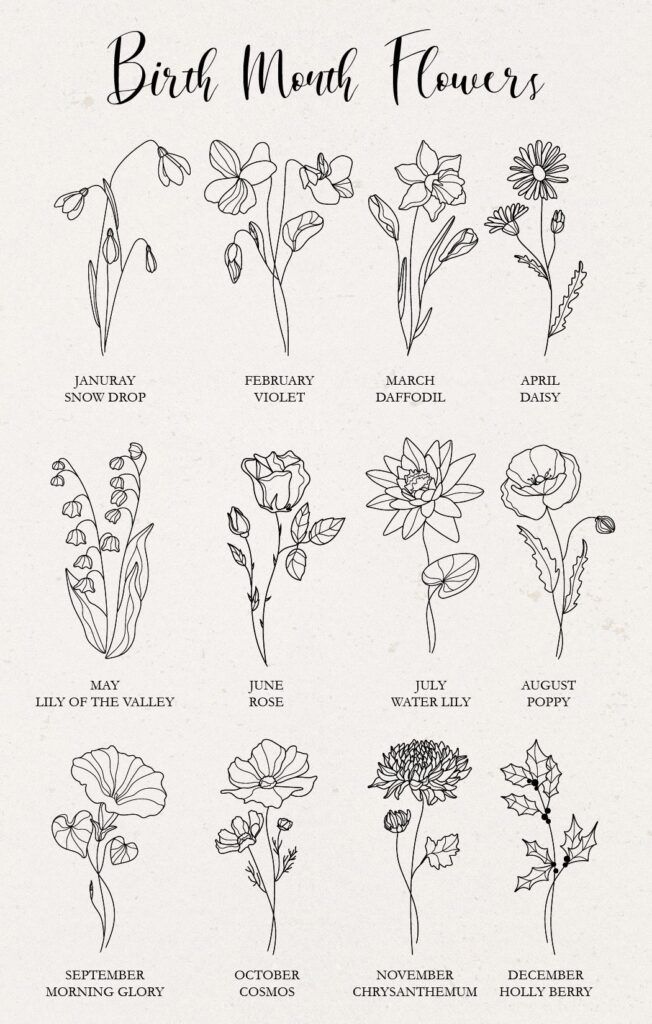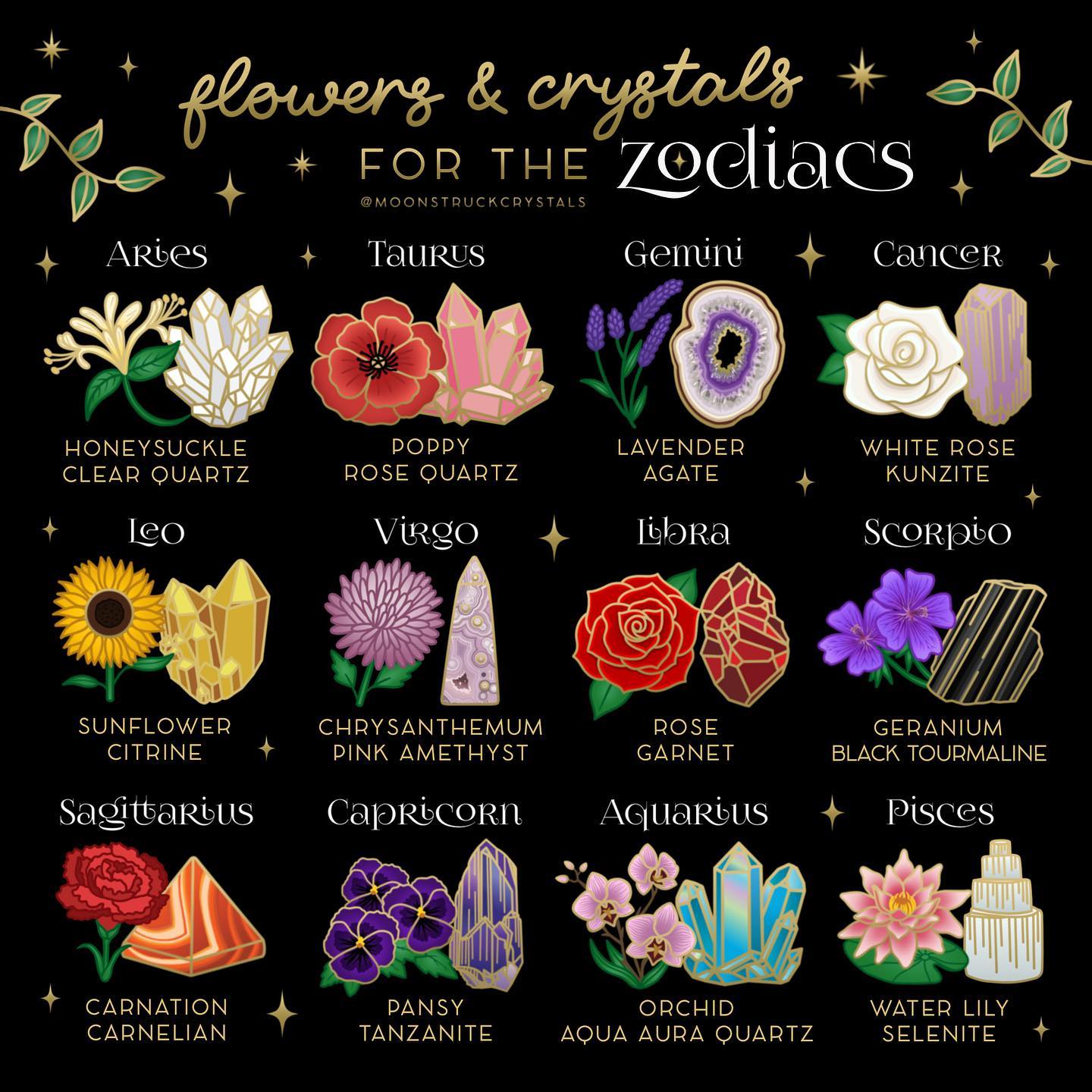Welcome to a journey through the world of birth flower tattoos! In this article, we delve into the captivating realm of floral symbolism and explore the significance of choosing a January birth flower tattoo. With each month holding its unique floral representation, we uncover the rich meanings and stories behind these beautiful tattoos, offering a guide for those seeking to adorn their skin with nature's exquisite creations.
The January Birth Flowers: Carnation and Snowdrop

January, the month that ushers in the new year, is represented by two distinct flowers: the carnation and the snowdrop. Each of these flowers carries its own set of symbolic meanings and cultural significance, making them popular choices for tattoos.
Carnation: A Symbol of Love and Admiration
The carnation, with its vibrant colors and delicate petals, is a timeless classic in the world of flowers. In the language of flowers, carnations are often associated with love, fascination, and distinction. They are believed to convey a deep affection and admiration for the recipient.
Throughout history, carnations have played a significant role in various cultures. In ancient Greece, they were dedicated to the god Dionysus and were used in ceremonial garlands. In Christian tradition, carnations are associated with the Virgin Mary, symbolizing her love and purity. The Victorians, known for their elaborate floral language, used carnations to express their deepest feelings of love and admiration.
When it comes to tattoos, carnations offer a wide range of artistic possibilities. Their bold colors and intricate details make them a popular choice for vibrant and detailed tattoo designs. Whether it’s a single bloom or a bouquet, a carnation tattoo can be a powerful statement of love and respect.
| Color Variations | Symbolic Meanings |
|---|---|
| Pink Carnations | Mother's love, remembrance |
| Red Carnations | Deep love, admiration |
| White Carnations | Purity, good luck |
| Yellow Carnations | Disappointment, rejection |

The color of a carnation tattoo can add layers of meaning, allowing individuals to personalize their tattoo to represent their unique sentiments.
Snowdrop: A Symbol of Hope and Purity
The snowdrop, a delicate and graceful flower, is often seen as a harbinger of spring, bringing hope and new beginnings. In the realm of tattoo symbolism, snowdrops are associated with purity, rebirth, and new life.
Native to Europe, snowdrops have long been admired for their resilience and ability to bloom even in the harshest of winters. They represent the idea that beauty and renewal can emerge from the most challenging circumstances. In many cultures, snowdrops are seen as a symbol of hope and a reminder that better times are ahead.
Tattoos featuring snowdrops often showcase their simple yet elegant form. The small, white petals and green foliage create a delicate and refined design. Snowdrop tattoos are a popular choice for those seeking a subtle yet meaningful tattoo, often symbolizing a personal journey of resilience and hope.
| Symbolic Meanings | Interpretations |
|---|---|
| Purity | Innocence, spiritual growth |
| Rebirth | Personal transformation, starting anew |
| Hope | Optimism, belief in a brighter future |
Designing Your January Birth Flower Tattoo

When it comes to designing your January birth flower tattoo, there are endless possibilities. Here are some ideas to inspire your creative journey:
- Minimalist Approach: Opt for a simple silhouette of a carnation or snowdrop, showcasing the essence of the flower without intricate details. This style is perfect for those seeking a subtle and elegant tattoo.
- Botanical Realism: If you appreciate the intricate beauty of flowers, consider a tattoo that replicates the botanical accuracy of your chosen birth flower. This style often involves delicate lines and shading, capturing the flower's natural form.
- Watercolor Effect: For a vibrant and dreamy look, a watercolor-inspired tattoo can be a beautiful choice. The soft, blended colors can bring a unique dimension to your birth flower design.
- Symbolism and Personalization: Incorporate symbolic elements into your tattoo design. For example, you might include a heart or a quote that represents love alongside a carnation tattoo, or add a delicate butterfly to symbolize rebirth with a snowdrop tattoo.
- Blackwork and Linework: Explore the world of blackwork tattoos, where bold lines and shading create a powerful statement. This style can be particularly effective for emphasizing the form and structure of your birth flower.
Finding the Right Tattoo Artist
Choosing the right tattoo artist is crucial to ensuring that your January birth flower tattoo turns out exactly as you envision. Here are some tips to help you find the perfect artist:
- Research and Portfolio Review: Take the time to research tattoo artists in your area or online. Look for artists who specialize in botanical or floral tattoos and have a portfolio that showcases their skill and style.
- Consultation and Communication: Reach out to artists whose work resonates with you. Discuss your ideas and vision for your birth flower tattoo. A good artist will listen to your preferences and offer suggestions to create a unique and personalized design.
- Experience and Technique: Consider the artist's experience and their proficiency in the style you desire. For intricate botanical tattoos, you might seek out an artist with a background in botanical illustration or fine art.
- Safety and Hygiene: Ensure that the tattoo studio maintains strict hygiene standards. This includes the use of sterile equipment and proper sanitation practices. Your health and safety should always be a top priority.
Caring for Your Birth Flower Tattoo
To ensure that your January birth flower tattoo heals beautifully and retains its vibrant colors, proper aftercare is essential. Here are some tips to keep in mind:
- Initial Healing: Follow your tattoo artist's instructions for the first few days of healing. This often includes keeping the tattoo clean, moisturized, and protected from the sun.
- Moisturization: Once the initial healing period is over, continue to moisturize your tattoo regularly. This helps prevent dryness and maintains the tattoo's flexibility.
- Sun Protection: Protect your tattoo from the sun's harmful UV rays. Use sunscreen with a high SPF when exposed to sunlight, as this can cause fading and damage to the tattoo over time.
- Touch-Ups: As your tattoo ages, you may notice some fading or blurring. Consult with your tattoo artist to discuss touch-up options to keep your birth flower tattoo looking fresh and vibrant.
Conclusion

The choice of a January birth flower tattoo is a beautiful way to celebrate the unique symbolism and beauty of nature. Whether you opt for the vibrant carnation or the delicate snowdrop, your tattoo will serve as a lasting reminder of the values and emotions these flowers represent. With careful design, skilled artistry, and proper care, your birth flower tattoo will be a cherished part of your personal narrative, telling a story of love, hope, and resilience.
Can I combine both January birth flowers in one tattoo design?
+Absolutely! Combining the carnation and snowdrop in one tattoo can create a unique and meaningful design. It allows you to symbolize both love and admiration (carnation) and hope and purity (snowdrop) in a single piece. Consider how these flowers can complement each other aesthetically and symbolically to create a powerful tattoo.
Are there any cultural or religious associations with carnations or snowdrops that I should be aware of before getting a tattoo?
+Yes, it’s important to be mindful of cultural and religious contexts when choosing a flower tattoo. Carnations, for instance, have religious associations with the Virgin Mary in Christianity. Snowdrops, on the other hand, are often associated with new beginnings and hope, which can have varying interpretations across different cultures. Researching and understanding these associations can help ensure your tattoo holds the right personal and cultural significance for you.
How long does it typically take to heal a birth flower tattoo, and what are the signs of proper healing?
+The healing process for a tattoo typically takes around 2-3 weeks. During this time, your tattoo may go through various stages, including swelling, itching, and flaking. It’s important to keep the area clean and moisturized to promote healing. Signs of proper healing include reduced redness and swelling, and the tattoo’s colors becoming more vibrant as the skin heals.